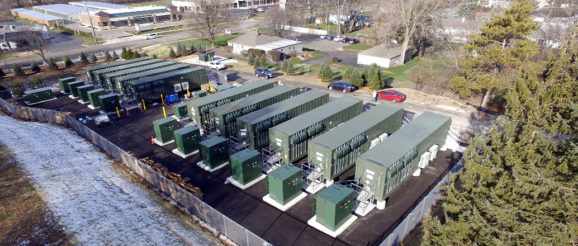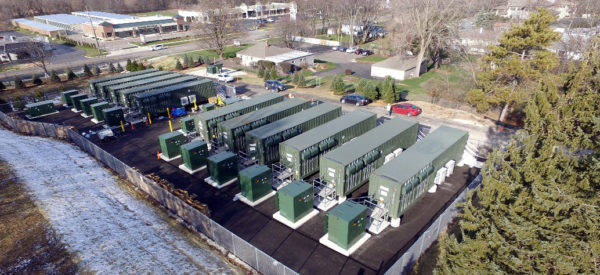The ecosystems of innovation


Energy storage is a sector marked by continuous technological development – and given the challenges created by our rapidly transforming energy systems, it needs to be. But how do innovations move from idea to reality?
Specifically, what kind of environments are needed to nurture new technologies and approaches, and how do they interact with existing supports?
-From the pv magazine energy storage special edition-
There are few myths as enduring in American culture as the Great Man Theory, the idea that history is shaped primarily by exceptional individuals who rise, creating themselves like the ancient Egyptian sun god Ra out of primordial chaos, independent of social circumstances, family, collaborators, education, mentorship or overall context.
And there are few places where this fantasy is as prevalent as the worlds of technology and energy. If we haven’t actively participated in perpetuating the cult of Steve Jobs, the legend of Nikolai Tesla, and of course Elon Musk idolatry, then we’ve at least witnessed these.
But as much as we may all fall prey to this delusion from time to time, there is growing awareness of the need for concrete supports to drive the level of innovation that will be necessary to guide the rapid transformation of the global energy space.
This increased attention to the role that support plays in innovation – and the importance of innovation to economies – has led to a proliferation of incubators, accelerators, and even game-showlike contests as cities, states and nations race to see who can host the next Silicon Valley.
But what does it all result in? And for innovation to succeed – particularly in the critical fields that are driving the global energy transition – what kinds of support mechanisms are actually needed?
Different places, different needs
To answer some of these questions, pv magazine spoke with activist, entrepreneur and innovation mogul Danny Kennedy. Kennedy serves as the chief energy officer at New Energy Nexus (NEN), an organization headquartered in Oakland, California, that supports clean energy entrepreneurs from California to Southeast Asia and East Africa.
New Energy Nexus provides a wide range of services, including everything from arranging co-working spaces to offering funding and providing legal help. Kennedy notes that the kinds of support needed are usually determined by multiple factors. These factors include the stage of the business, with a defining feature being whether or not it has developed a prototype. At a more granular level, the stage of new products can be conceptualized using the Technology Readiness Level (TRL) scale, which was developed by NASA in the 1970s.
The U.S. government provides support for both basic research as well as early-stage technology development, with an emphasis on the lower TRL levels. This includes programs to support the development of energy technologies through the U.S. Department of Energy and the Advanced Research Projects Agency – Energy (ARPA-E).
But this is certainly not the case everywhere. And with work spanning the globe, one of the things that Kennedy stresses is that the needs of entrepreneurs are very different depending not only on the business stage, but on geography. NEN is actively working with entrepreneurs in Uganda and Indonesia, and Kennedy notes that existing supports are very different there.
“In those markets, there is almost nothing to support them,” explains Kennedy. “There is no R&D budget, there is no Department of Energy, there are no national labs and innovation systems and grant programs. That’s the big gap and where we are really trying to fill in that need is to try to build out the incubator and accelerator network globally, and also trying to synergize it.”
He notes that despite these challenges, innovators in those nations are trying to “leapfrog” to distributed energy systems for massive populations “that want and deserve modern electricity and mobility systems.”
Hard and soft supports
Even for industrialized nations, where a variety of actors fund research and development – including governments, universities and corporations – there are still ample needs. And much of the support that Kennedy and his network provide to entrepreneurs – whether in Jakarta or Oakland, California – is concrete: connections to funding, technical assistance, legal help and space to work in.
Kennedy notes that it is particularly important to support innovators in the areas where they do not have expertise. “When you think about the innovators, they are often engineering teams, whether that is hardware or software,” explains Kennedy. “They have no clue about term sheets, lawyering, intellectual property, and all that stuff. You don’t want them at the stage of pre-prototype devices to be spending tens of thousands of dollars of their own capital on legal counsel, but you want legal advice for them to be safe and not do anything stupid.”
Also, such teams may need support in communicating their ideas – including to the people who will ultimately be paying for them. “How does a young team of brainiacs who have invented a better mousetrap relate to the procurements people inside General Electric or Exelon?” asks Kennedy.
California innovation
While New Energy Nexus has supported a number of incubators and accelerators around the world, one of the programs that it has helped to fund operates less than a day’s drive south of the Bay Area – Southern California Energy Innovation Network (SCEIN), which is managed by incubator Cleantech San Diego and operates three other incubators throughout southern California.
SCEIN was initiated by a $5 million, five-year grant from the California Energy Commission (CEC). The agency saw a need to fund innovation in the context of the state’s ambitious clean energy mandate, and that’s what it will take to get to very high portions of renewable energy on the grid.
“CEC realized that business-as-usual was not going to work, and that we needed to come up with an out-of-thebox approach,” explains Alyssa Gutner-Davis, the program manager for Cleantech San Diego.
SCEIN works with companies in the concept stage to early commercialization, including the critical step of customer discovery. It provides a wide range of services, including research and testing, market intelligence, and of course introductions to investors.
Along the way the initiative has attracted funding through the CalSEED program, which has made $25 million available for companies in round A and B grants. But that is just the beginning.
In the three years that SCEIN has been operating, companies that have gone through the program have raised $43 million in private capital and $5.7 million in public capital, as well as filing 193 patents.
The program’s graduates include some real success stories, including EV infrastructure company eMotorWerks, which was acquired by Italian energy giant Enel in 2017.
The social aspect
SCEIN is quite well connected and the initiative’s technical advisory committee includes experts from some of the top companies in the global energy transition. These include DNV GL, Enel Green Power and Engie, as well as law firm Stoel Rives, and even utilities SDG&E and SCE.
As part of the program, startups also receive mentorship. This helps them to assess how program service delivery is going, so they can keep track of progress. Kennedy says that creating a space for all these kinds of different interactions provides a great deal of value unto itself.
“One of the secrets to our success as an organization is just bringing people together,” he observes.
“As crazy as that sounds, I think human or social capital is more valuable than the financial capital. The magic is actually in the creative collisions, and that peer-to-peer learning.”
He also notes that given what they are up against, these energy startups can use all of the help they can get.
“The difference between a startup in clean energy, building out smart grids or better sensor technology, or AI for electricity management or mobility services – [is that] they are up against huge vested interest companies that are basically dug in and trying to protect themselves from change.”
The global energy transition of today is being advanced by challenging the energy structures of yesterday. Overriding systems requires the continuous nurturing of innovation, and the networks that support innovation play a critical role in developing the smart technologies of tomorrow.
